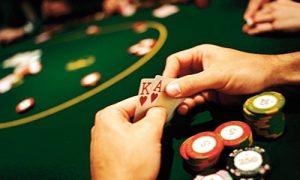
Do you think you are very predictable? According to most scientific papers, you are even more predictable than you think. We all are. For example, let's imagine that you called a group of friends and asked them to simulate the translation of a coin. You didn't give them any coins, you just asked them to imagine that they flipped a real coin 20 times and to write down the results. What do you think they will do?
The result is usually close to ten numbers and ten coats of arms in one series of translations. People will almost never have a result with 7 numbers and 13 coats of arms, or 6 numbers and 14 coats of arms. That is the first problem. If we were to plot a graph for coin tosses, the Gaussian Bell curve would be unnaturally narrow. There would be nothing at the edges, whereas with a real coin toss there should be many unexpected events.
The second problem is that the written group of conversions is too short. If s is a number and H is a coat of arms, the sequence would be:
sssHHHsHHsHHsHsHs
Watch the sequence. The longest group is three letters. It may seem that everything is fine here and that everything is really random, but in fact this sequence shows that the probability that a given pattern ends after three consecutive letters is 100%, obviously this probability should be 50%. This is what a truly random sequence looks like:
HsHsHsHsHsHsHsHsH
As we can see, this particular line has 7 numbers and 13 coats of arms, and there is one group of as many as 5 letters. Of course, this sequence is very far from the median, but the point is that people would never come up with this kind of string.
Another good example of this phenomenon would be the composition of points in space. If I asked you to imagine a random grid of 100 points, it would probably look like this:

And it's not a completely random grid. A truly random grid would look like this:

You probably notice the difference. The points of the randomly generated grid have collapsed into different groups and sets of groups. It does not look as spacious and capacious as the artificial one.
What could be gained from all this? People have a very poor and limited understanding of what randomness is. Their understanding is that it has to be organised and orderly.
Fake randomness is organised and uniform. The real thing can be clustered and messy, which doesn't look so nice. This is the basis of the flow of the game. Ultimately, after all, what we are doing in the flow of the game is trying to simulate randomness.
Let's review the sequence:
F.F.F.V.F.B.V.F.F.F.F.F.B.F.F.F.F.V.F
This time, we have highlighted bluffs and denials. As a reminder, we don't choose when to make a valuebet, we just make it when we have a good hand. It follows that a highlighted game is a game we can control. Through the pattern of folds and bluffs, we are trying to simulate the randomness of a 4-bet game.
So how exactly do we want to simulate randomness? From a metagame perspective, we have two choices at any given moment. The first is random and sincere, the second is non-random and with intention. Accidental and with intent means that the opponent senses when you choose to attack.
Both of these options can be useful, depending on the situation. In a 4-bet game, if you bluff with 4-bet, but you look sincere enough to do something random, your opponent will believe you and the bluff will succeed. Conversely, if you are 4-betting for value and appear to be doing everything with intent, there may be some action at the table. Players usually know this intuitively, because when you get high pocket pairs three times in a row, it certainly doesn't look like a coincidence.
Unfortunately, getting good cards is not in your control. You cannot set up your flow pattern to distribute good hands in that order, and only use them when your opponent doesn't believe you.
The only truly random event in a 4-bet game is getting value hands. Everything else is simulated randomness. And the main purpose of such simulations is to make your opponent think you are making a value bet when you are actually bluffing.





